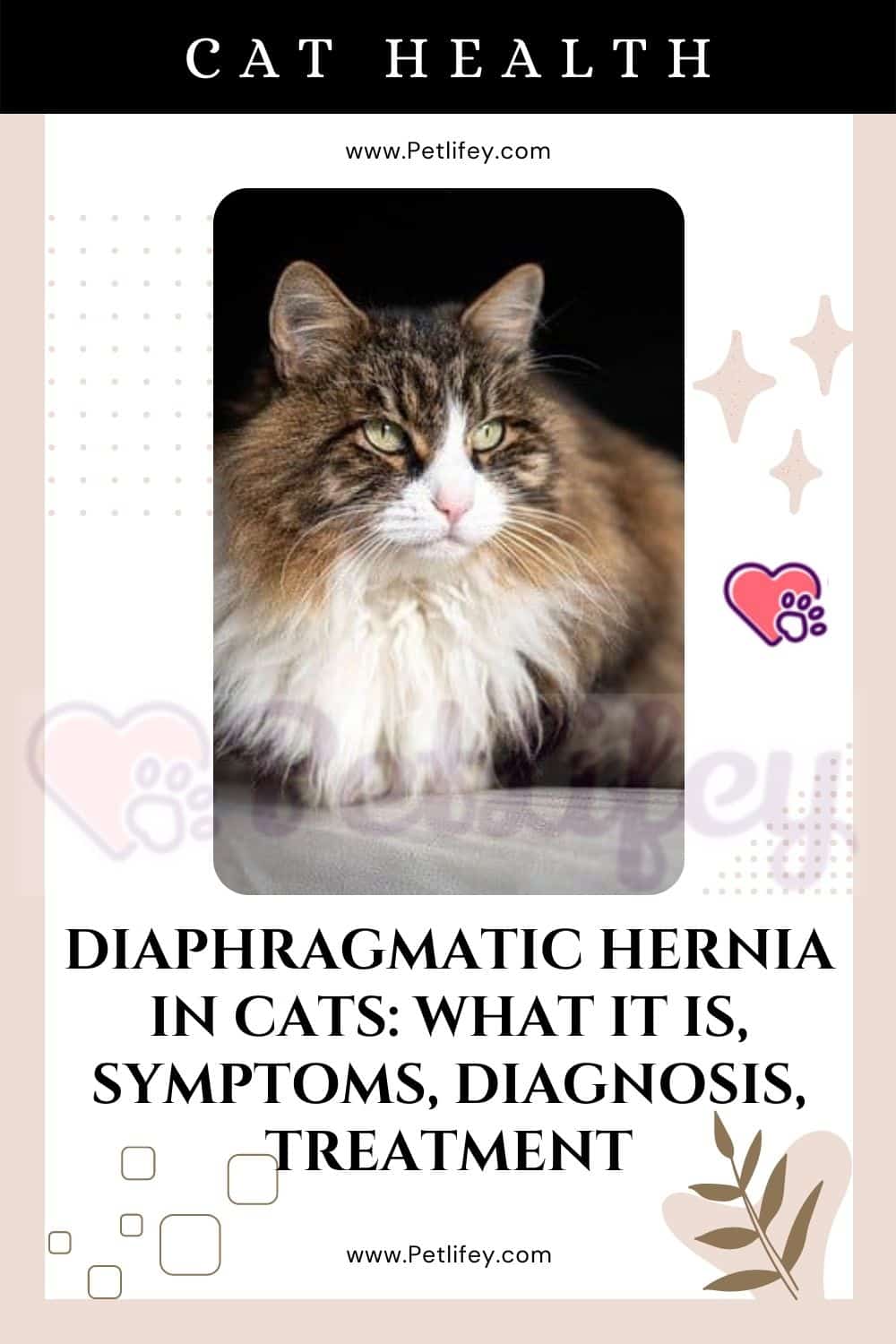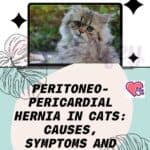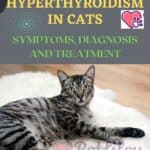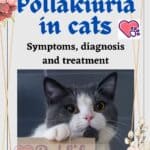Diaphragmatic Hernia in Cats: Understanding Symptoms, Diagnosis, and Treatment Options
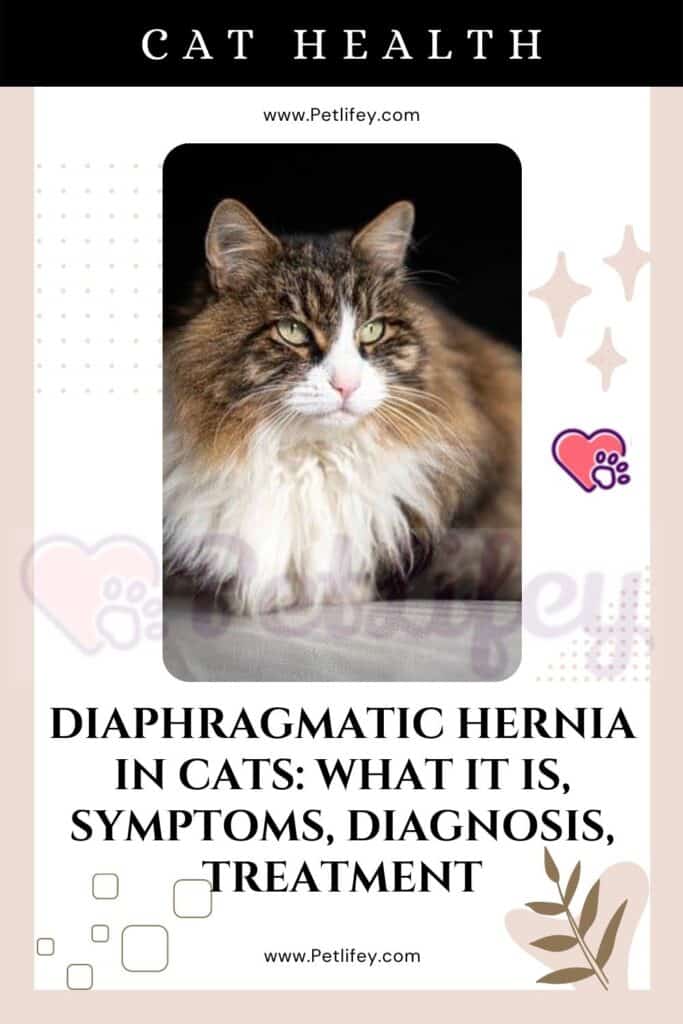
A diaphragmatic hernia in cats is a serious condition where there’s a tear or defect in the muscle that separates the chest cavity from the abdominal cavity, known as the diaphragm. This allows abdominal organs to move into the chest, which can severely affect your cat’s breathing and organ function. The condition can be congenital, meaning the cat is born with it, or can be caused by trauma, such as a fall or a blow to the body.
Symptoms of a diaphragmatic hernia in your cat may include difficulty breathing, rapid breathing, an inability to exercise, lethargy, weight loss, a decrease in appetite, vomiting, diarrhea, or abnormal abdominal appearance. These signs can be distressing and may be mistaken for less serious issues; therefore, it’s essential to observe any sudden or progressive changes in your cat’s behavior or health.
Diagnosis of this condition is critical and should be performed by a veterinarian. It often requires imaging such as radiographs or ultrasound to confirm the presence of a hernia and to assess the extent of the organ displacement. Successful treatment typically involves surgical repair of the hernia, and the prognosis can be good if the condition is addressed promptly and followed by appropriate post-operative care.
Understanding Diaphragmatic Hernia in Cats
Diaphragmatic hernia is a serious condition where abdominal organs move into the chest cavity, compelling immediate medical attention.
Definition and Types of Diaphragmatic Hernia
Diaphragmatic hernia refers to the protrusion of abdominal organs into the chest cavity due to a defect or tear in the diaphragm—the muscle that separates these two areas. Two main types are identified:
- Hernia with a congenital origin: Present at birth, caused by improper development of the diaphragm.
- Acquired hernia, typically traumatic: This results from an injury, often caused by a forceful impact such as a car accident.
Congenital vs. Traumatic Diaphragmatic Hernias
- Congenital diaphragmatic hernias are less common and occur due to the diaphragm not forming correctly during fetal development. You may not notice symptoms immediately, as they can develop over time.
- Traumatic diaphragmatic hernias are usually the result of physical trauma. Signs of trouble, such as difficulty breathing or gastrointestinal distress, often appear shortly after the traumatic event.
Causes and Risk Factors
A diaphragmatic hernia in your cat can arise from trauma or be present from birth. Understanding the causes and risk factors is crucial for prevention and early intervention.
Common Causes of Diaphragmatic Hernias
Trauma: The leading cause of diaphragmatic hernias in cats is blunt force trauma. This can result from:
- Fall: A high fall, for instance, from a window, can cause enough impact to tear the diaphragm.
- Motor Vehicle Accident: Collisions involving cars are significant contributors to traumatic diaphragmatic hernias.
- Blow to the Abdomen: An impact directly to the abdominal region may also result in a diaphragmatic hernia.
Congenital Issues: Although less common, congenital diaphragmatic hernias occur when your cat is born with a defect in the diaphragm. The causes for this can vary and may not always be clear.
Prevalence in Cats and Associated Risks
Risk Factors:
- Younger cats may be more prone to injuries from falls or accidents due to their active nature.
- Outdoor cats are at higher risk of traumatic injuries leading to diaphragmatic hernias compared to indoor cats, purely based on their increased exposure to potential dangers such as high places and vehicles.
Prevalence:
- Traumatic diaphragmatic hernias are more frequently diagnosed in cats than congenital types.
- The overall number of diaphragmatic hernia cases in cats is not as high as in some other emergency health issues, yet it represents a significant cause of severe trauma in feline patients.
Symptoms of Diaphragmatic Hernia in Cats
When your cat is afflicted with a diaphragmatic hernia, you may notice a cluster of symptoms ranging from respiratory distress to changes in physical behavior and appearance. Recognizing these signs is crucial for timely diagnosis and treatment.
Identifying Clinical Signs
Your cat may display a variety of clinical signs that suggest a diaphragmatic hernia:
- Respiratory Distress: You may observe your cat having difficulty breathing, which could manifest as rapid breathing (tachypnea) or labored breathing (dyspnea).
- Audible Changes: Muffled heart sounds or irregular lung sounds when your cat breathes might be apparent, which are indicative of potential internal displacement.
Assessing Changes in Behavior and Appearance
Beyond the clinical signs, your cat’s behavior and appearance can offer additional clues:
- Physical Changes: A tucked-up or empty-looking abdomen and less interest in activity could be signs that warrant your attention.
- Appetite and Weight: A noticeable decline in appetite (anorexia or inappetence) accompanied by weight loss can be significant indicators.
- Gastrointestinal Issues: You might also notice episodes of vomiting or diarrhea, which can coincide with the aforementioned symptoms.
By observing your cat closely and recognizing these symptoms, you will be better equipped to seek veterinary attention, which can be pivotal in your cat’s prognosis.
Diagnosis of Diaphragmatic Hernia
When suspecting a diaphragmatic hernia in your cat, a veterinarian will utilize a combination of physical examination and advanced diagnostic imaging to accurately diagnose the condition.
Physical Examination and History
Your cat’s diagnosis begins with a thorough physical examination and a detailed medical history. The veterinarian will look for signs of respiratory distress, such as rapid breathing or shortness of breath, which can indicate a hernia’s effect on lung function. Palpation of the abdomen may reveal an emptier than usual abdominal cavity, as some organs might have moved into the thoracic cavity through the hernia.
Advanced Diagnostic Imaging
To confirm the diagnosis, advanced imaging techniques are essential.
- X-rays (Radiographs): These are critical in visualizing the positioning of abdominal organs. An x-ray can reveal if the organs have entered the chest area through an opening in the diaphragm.
- Ultrasound: This imaging technique provides detailed images of the soft tissue structures and can assist in examining the movement of the diaphragm and identifying any displaced organs.
These imaging modalities are non-invasive and provide the necessary evidence to confirm if your cat has a diaphragmatic hernia. Early and accurate diagnosis is key to successful treatment and your cat’s prognosis.
Treatment and Management
Treating diaphragmatic hernia in cats typically involves initial stabilization followed by surgical repair, with diligent postoperative care being crucial for recovery.
Initial Stabilization
Before surgical intervention, your cat will need stabilization. This process includes managing shock, ensuring adequate breathing, and treating any other associated injuries or complications. Oxygen therapy is often administered, and if your cat is experiencing respiratory distress, thoracocentesis—the removal of air or fluid from the chest cavity—may be necessary. Intravenous (IV) fluid therapy is initiated to address shock and maintain blood pressure.
Surgical Repair and Postoperative Care
Surgery is the definitive treatment for a diaphragmatic hernia. Under general anesthesia, the herniated organs are repositioned into the abdominal cavity, and the diaphragm is repaired. The timing of surgery is carefully considered based on your cat’s stabilization status.
Postoperative care is critical and includes:
- Monitoring for complications, which could include infection or recurrence of the hernia.
- Pain management, often involving analgesics and, in some cases, local anesthetic procedures.
- Respiratory support, where necessary, and close observation for signs of respiratory distress.
- Gradual reintroduction to feeding post-surgery, initially with small, frequent meals, to avoid putting immediate pressure on the repaired diaphragm.
A hospital stay is typical after surgery, allowing for monitoring and managing any potential complications that may arise. Your vet will discuss the appropriate recovery timeline with you, which is influenced by your cat’s overall health, age, and the complexity of the hernia repair. Follow-up visits will ensure the hernia is healing properly, and that no new symptoms have emerged.
Post-Treatment Prognosis
After your cat has undergone treatment for a diaphragmatic hernia, understanding the prognosis is crucial. You want to know what to expect in both the short and the long term, as well as factors that can influence recovery.
Short-Term and Long-Term Expectations
In the short term, your cat’s recovery can be immediate or take several days. You may notice rapid improvement in breathing and activity levels. However, be aware of potential complications like re-expansion pulmonary edema (REPE), which can occur after the lung re-expands post-surgery. This condition is serious and can impact the survival rate.
For the long term, most cats show a positive response post-surgery, assuming there are no significant complications. With proper post-operative care, many cats return to a normal quality of life. The survival rate varies but often hinges on timely surgery and proper management of post-operative care.
Factors Influencing Recovery
Several specific factors can influence your cat’s recovery:
- Anesthetic and Surgical Duration: Longer periods under anesthesia and extended surgical procedures can increase risks and affect outcomes negatively.
- Concurrent Injuries: Presence of other injuries, particularly those impacting soft tissue or bones, can complicate recovery.
- Perioperative Care: Adequate oxygen support and vigilant monitoring for complications are essential in the days following surgery.
By being aware of these factors, you can actively discuss with your veterinarian the best course of action for your cat’s post-treatment care and be prepared for the necessary monitoring and follow-up visits.
Prevention and Future Care
Preventing a diaphragmatic hernia in your cat mostly involves reducing the risks of trauma, as many cases are caused by accidents. After treatment, ongoing management includes regular check-ups to ensure your cat’s continued health.
Reducing the Risks
- Spay/Neuter: Spaying or neutering your cat can reduce roaming and the risk of traffic accidents, fights, and falls that could result in trauma to the diaphragm.
- Safe Environment: Keep your cat indoors or create a safe outdoor environment to minimize exposure to risks.
Monitoring and Ongoing Management
- Regular Check-ups: Schedule regular veterinary check-ups to monitor your cat’s health. Any changes or unusual symptoms should prompt a visit.
- Veterinarian Follow-up: After a diaphragmatic hernia repair, follow the veterinarian’s advice for recovery closely and attend all recommended follow-up appointments to check on the healing process.

